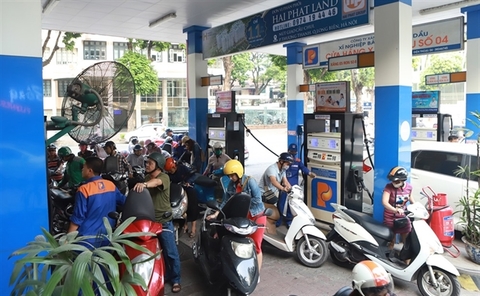
Customers at a petrol station on Ha Noi's Tran Hung Dao Street. The petrol and oil prices in January increased by 1.29 per cent compared to December 2019. — VNA/ VNS Photo Hoang Hung
Viet Nam’s consumer price index (CPI) in January hit a record high, up 1.23 per cent over the previous month and 6.43 per cent year on year, according to the General Statistics Office (GSO).
This is the highest January CPI growth recorded in the last seven years.
Compared to the previous month, an upturn was seen in the prices of ten out of 11 main groups of goods and services, led by food and catering services (2.29 per cent). It was followed by housing and construction materials (1.47 per cent); goods and other services (0.92 per cent); transport (0.69 per cent); alcohol and tobacco (0.65 per cent); garments and textiles, headwear and footwear (0.33 per cent); household equipment and products (0.27 per cent); and culture, entertainment and travel (0.25 per cent).
The only group experiencing a fall in prices was post and telecommunications (0.03 per cent).
Do Thi Ngoc, head of the GSO’s Price Statistics Department, explained that the CPI in January saw a strong rise due to the higher demand for food and foodstuff, drinks and textiles for the Tet (Lunar New Year) festival.
The petrol and oil prices in January increased by an average of 1.29 per cent compared to December 2019. Meanwhile, the price of gas climbed 14.08 per cent against the previous month.
At the same time, domestic gold price was up 4.37 per cent over the previous month; while that of the US dollar has been kept stable, at around VND23,222 per US dollar.
GSO said the core inflation in January, which is CPI excluding grain food, fresh foodstuff, energy and the State-managed medical and educational services, increased by 0.76 per cent from December 2019, and 3.25 per cent compared to the same period last year.
The general inflation in January grew at a faster pace than the core inflation, reflecting that price changes were mainly driven by higher prices of food, services and petrol. — VNS